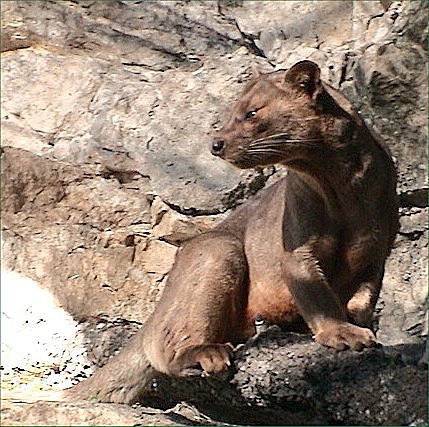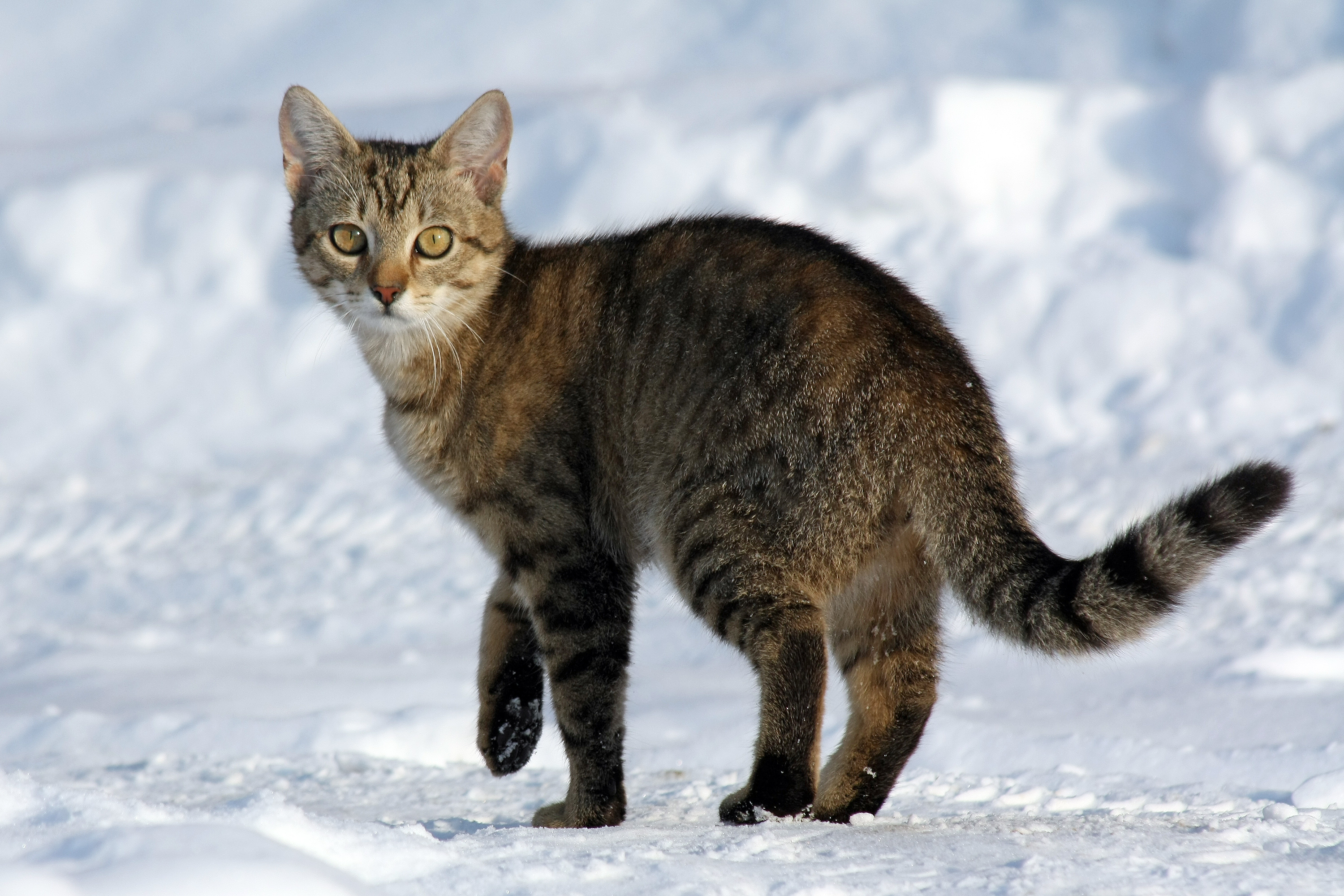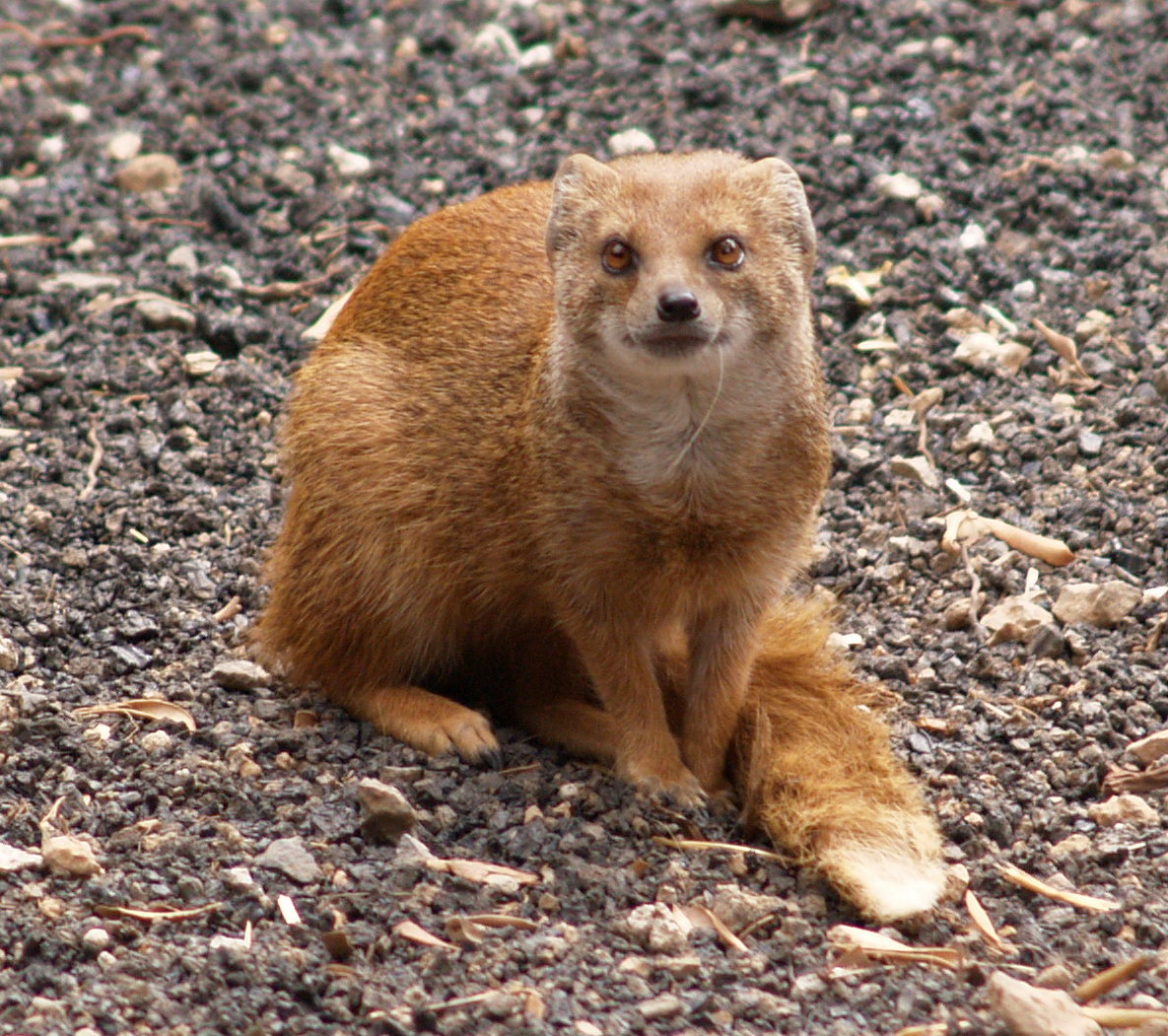|
Euplerid
Eupleridae is a family of carnivorans endemic to Madagascar and comprising 10 known living species in seven genera, commonly known as euplerids, Malagasy mongooses or Malagasy carnivorans. The best known species is the fossa (''Cryptoprocta ferox''), in the subfamily Euplerinae. All species of Euplerinae were formerly classified as viverrids, while all species in the subfamily Galidiinae were classified as herpestids. Recent molecular studies indicate that the 10 living species of Madagascar carnivorans evolved from one ancestor that is thought to have rafted over from mainland Africa 18–24 million years ago. This makes Malagasy carnivorans a clade. They are closely allied with the true herpestid mongooses, their closest living relatives. The fossa and the Malagasy civet (''Fossa fossana'') are each evolutionarily quite distinct from each other and from the rest of the clade. All Eupleridae are considered threatened species due to habitat destruction, as wel ... [...More Info...] [...Related Items...] OR: [Wikipedia] [Google] [Baidu] |
Fossa (animal)
The fossa (''Cryptoprocta ferox''; or ; ) is a slender, long-tailed, cat-like mammal that is endemic to Madagascar. It is a member of the carnivora, carnivoran family Eupleridae. The fossa is the largest mammalian carnivore on Madagascar and has been compared to a small cougar, as it has Convergent evolution, convergently evolved many cat-like features. Adults have a head-body length of and weigh between , with the males larger than the females. It has semi-retractable claws (meaning it can extend but not retract its claws fully) and flexible ankles that allow it to climb up and down trees head-first, and also support jumping from tree to tree. A larger relative of the species, ''Cryptoprocta spelea'', probably became extinct before 1400. The species is widespread, although population density, population densities are usually low. It is found solely in forested habitat, and actively hunts both by day and night. Over 50% of its diet consists of lemurs, the endemic primates f ... [...More Info...] [...Related Items...] OR: [Wikipedia] [Google] [Baidu] |
Galidiinae
Galidiinae is a subfamily of carnivorans that is restricted to Madagascar and includes six species classified into four genera. Together with the three other species of indigenous Malagasy carnivorans, including the fossa, they are currently classified in the family Eupleridae within the suborder Feliformia.Wozencraft, 2005, pp. 560–561 Galidiinae are the smallest of the Malagasy carnivorans, generally weighing about 600 to 900 g. They are agile, short-legged animals with long, bushy ringed tails.Yoder and Flynn, 2003 They closely resemble the mongooses (family Herpestidae) of continental Africa and southern Eurasia, with which they were classified until 2006, and accordingly they are said to be "mongoose-like" or even described as "Malagasy mongooses". The Malagasy name vontsira is a common name or alias for many species. Taxonomy The relationship of galidiines to other carnivorans has historically been controversial. Up to the middle of the 20th century, all smaller felifor ... [...More Info...] [...Related Items...] OR: [Wikipedia] [Google] [Baidu] |
Feliformia
Feliformia is a suborder within the order Carnivora consisting of "cat-like" carnivorans, including Felidae, cats (large and small), hyenas, mongooses, viverrids, and related taxa. Feliformia stands in contrast to the other suborder of Carnivora, Caniformia consisting of "dog-like" carnivorans (includes Canoidea). The separation of the Carnivora into the broad groups of feliforms and caniforms is widely accepted, as is the definition of Feliformia and Caniformia as suborders (sometimes superfamilies). The classification of feliforms as part of the Feliformia suborder or under separate groupings continues to evolve. Systematic classifications dealing with only extant taxa include all feliforms into the Feliformia suborder, though variations exist in the definition and grouping of families and genera.Taxonomic references - extant species (1): Supporting descriptive information and picturesDiversity Web (online) – Feliformia/ref>Taxonomic references - extant species (2)Integrated ... [...More Info...] [...Related Items...] OR: [Wikipedia] [Google] [Baidu] |
Mungotictis
The narrow-striped mongoose (''Mungotictis decemlineata'') is a member of the family Eupleridae endemic to Madagascar. It inhabits the western Madagascar succulent woodlands and northern Madagascar spiny thickets in western and southwestern Madagascar, where it lives from sea level to about between the Tsiribihina and Mangoky rivers. In Malagasy it is called bokiboky (pronounced "Boo-ky Boo-ky"). It is the only species in genus ''Mungotictis''. Taxonomy ''Galidia decemlineata'' was the scientific name used by Alfred Grandidier in 1867 for a mongoose collected on the west coast of Madagascar. It was placed in the genus ''Mungotictis'' by Reginald Innes Pocock in 1915. Phylogeny The narrow-striped mongoose is part of the Malagasy carnivore family Eupleridae that forms a monophyletic clade. It shares a common ancestor with sister clades of the Feliformia. Behaviour and ecology The narrow-striped mongoose is diurnal and lives in matriarchal family groups that practice coop ... [...More Info...] [...Related Items...] OR: [Wikipedia] [Google] [Baidu] |
Carnivoran
Carnivora ( ) is an order of placental mammals specialized primarily in eating flesh, whose members are formally referred to as carnivorans. The order Carnivora is the sixth largest order of mammals, comprising at least 279 species. Carnivorans are found on every major landmass and in a variety of habitats, ranging from the cold polar regions of Earth to the hyper-arid region of the Sahara Desert and the open seas. Carnivorans exhibit a wide array of body plans, varying greatly in size and shape. Carnivora are divided into two suborders, the Feliformia, containing the true felids and several animals; and the Caniformia, containing the true canids and many animals. The feliforms include the Felidae, Viverridae, hyena, and mongoose families, the majority of which live only in the Old World; cats are the only exception, occurring in the Old World and the New World, entering the Americas via the Bering land bridge. The caniforms include the Caninae, Procyonidae, bears, must ... [...More Info...] [...Related Items...] OR: [Wikipedia] [Google] [Baidu] |
Salanoia
''Salanoia'' is a genus of euplerid carnivoran with two currently described species found in Madagascar. They are mongoose-like, which is reflected in the older versions of their English names, for example brown-tailed mongoose which is now called brown-tailed vontsira. The name ''Salanoia'' is derived from ''salano'', one of the vernacular names for ''Salanoia concolor ''Salanoia'' is a genus of Eupleridae, euplerid carnivoran with two currently described species found in Madagascar. They are mongoose-like, which is reflected in the older versions of their English names, for example brown-tailed mongoose which i ...''. ''Vontsira'' is a Malagasy vernacular name that seems to apply to a few local species of local mongoose-like carnivores in the related genera ''Salanoia'', '' Galidia'', and '' Galidictis''. There have been new specimens found of Salanoia in Lac Alaotra, Madagascar. This new species have different physical characteristics from S. Concolor but have genetic simil ... [...More Info...] [...Related Items...] OR: [Wikipedia] [Google] [Baidu] |
Eupleres
''Eupleres'' is a genus of two species of mongoose-like euplerid mammal native to Madagascar that are known as falanoucs. They are primarily terrestrial and consume mainly invertebrates. Species * Eastern falanouc, ''Eupleres goudotii'' - mesic forests of eastern Madagascar * Western falanouc, ''Eupleres major'' - xeric areas in northwestern Madagascar Conservation status The IUCN Red List lists ''E. goudotii'' as vulnerable, while ''E. major'' has been assessed as endangered An endangered species is a species that is very likely to become extinct in the near future, either worldwide or in a particular political jurisdiction. Endangered species may be at risk due to factors such as habitat loss, poaching, inv .... References Carnivorans of Africa Euplerids Endemic fauna of Madagascar Taxa named by Louis Michel François Doyère {{carnivora-stub ... [...More Info...] [...Related Items...] OR: [Wikipedia] [Google] [Baidu] |
Euplerinae
Euplerinae, more commonly known as Malagasy civets, is a subfamily of carnivorans that includes four species restricted to Madagascar. Together with the subfamily Galidiinae, which also only occurs on Madagascar, it forms the family Eupleridae. Members of this subfamily, which include the fossa (''Cryptoprocta ferox''), falanoucs (''Eupleres goudotii'' and ''Eupleres major'') and Malagasy civet (''Fossa fossana''), were placed in families like Felidae and Viverridae before genetic data indicated their consanguinity with other Madagascar carnivorans. Within the subfamily, the falanouc and Malagasy civet are more closely related to each other than to the fossa. Classification Phylogenetic tree The phylogenetic relationships of Malagasy civets (Euplerinae) are shown in the following cladogram: See also * List of mammals of Madagascar This is a list of the native wild mammal species recorded in Madagascar. As of June 2014 (following the IUCN reassessment of the lemurs) there ... [...More Info...] [...Related Items...] OR: [Wikipedia] [Google] [Baidu] |
Mongooses
A mongoose is a small terrestrial carnivorous mammal belonging to the Family (biology), family Herpestidae. This family has two subfamilies, the Herpestinae and the Mungotinae. The Herpestinae comprises 23 living species that are native to southern Europe, Africa and Asia, whereas the Mungotinae comprises 11 species native to Africa. The Herpestidae originated about in the Early Miocene and Genetic divergence, genetically diverged into two main genetic lineage, lineages between 19.1 and . There is a large introduced population on the islands of Hawaii. Mongoose diets are varied but consist of mainly insects, hatchlings, reptiles and birds. Etymology The name is derived from names used in India for ''Herpestes'' species: or in classical Hindi; in Marathi language, Marathi; in Telugu language, Telugu; , and in Kannada. The form of the English name (since 1698) was altered to its "-:wikt:goose, goose" ending by folk etymology. It was spelled "mungoose" in the 18th and 19t ... [...More Info...] [...Related Items...] OR: [Wikipedia] [Google] [Baidu] |
Malagasy Civet
The Malagasy or striped civet (''Fossa fossana''), also known as the fanaloka (Malagasy, ) or jabady, is an euplerid endemic to Madagascar. It is the only species in genus ''Fossa''. The Malagasy civet is a small mammal, about long excluding the tail (which is only about ). It can weigh . It is endemic to the tropical forests of Madagascar. Malagasy civets are nocturnal. It eats small vertebrates, insects, aquatic animals, and eggs stolen from birds' nests. The mating season of the Malagasy civet is August to September and the gestation period is three months, ending with the birth of one young. The Malagasy civet is listed as Vulnerable by International Union for Conservation of Nature (IUCN). The Malagasy name ''fanaloka'' is related to the Malay word ''pelanduk'' "mousedeer" (via metathesis) likely due to their similar sizes and silhouette. Classification The Malagasy civet was to be placed in the subfamily Hemigalinae with the banded palm civets and then in its own ... [...More Info...] [...Related Items...] OR: [Wikipedia] [Google] [Baidu] |
Galidictis
''Galidictis'' is a genus in the subfamily Galidiinae of the family Eupleridae: a group of carnivorans that are endemic to Madagascar. The name is from two ancient Greek words that both approximately mean ‘weasel’: ''galid-'' (see '' Galidia'') and '' iktis''.''Merriam-Webster Unabridged Dictionary'' attributes it to "NL, fr. Gk ''galideus'' young weasel + ''iktis'' yellow-breasted marten European_weasel.html" ;"title="n ambiguous common name that might be the European weasel">weasel" However, Lewis and Short describes ''ictis'' () as simply "a kind of weasel '' Brill's New Pauly'' likewise also writes that "/ may be a wease Compare the word '' Galictis'' (grison, a closer relative of the weasel). It contains the following two species and two subspecies In Taxonomy (biology), biological classification, subspecies (: subspecies) is a rank below species, used for populations that live in different areas and vary in size, shape, or other physical characteristics (Morp ... [...More Info...] [...Related Items...] OR: [Wikipedia] [Google] [Baidu] |
Herpestidae
A mongoose is a small terrestrial carnivorous mammal belonging to the family Herpestidae. This family has two subfamilies, the Herpestinae and the Mungotinae. The Herpestinae comprises 23 living species that are native to southern Europe, Africa and Asia, whereas the Mungotinae comprises 11 species native to Africa. The Herpestidae originated about in the Early Miocene and genetically diverged into two main lineages between 19.1 and . There is a large introduced population on the islands of Hawaii. Mongoose diets are varied but consist of mainly insects, hatchlings, reptiles and birds. Etymology The name is derived from names used in India for ''Herpestes'' species: or in classical Hindi; in Marathi; in Telugu; , and in Kannada. The form of the English name (since 1698) was altered to its "-goose" ending by folk etymology. It was spelled "mungoose" in the 18th and 19th centuries. The plural form is "mongooses", although "mongeese" is also used. Characteristics Mongo ... [...More Info...] [...Related Items...] OR: [Wikipedia] [Google] [Baidu] |







